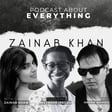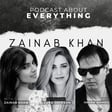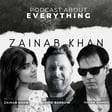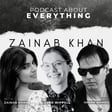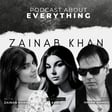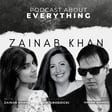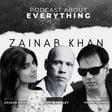
Book Week Series: The Art of Literature and Illustrations ft. Sarah Horne | Ep. 8
Welcome to our eight podcast episode, where we have the privilege of diving into the world of literature and illustrations with Laura Wippell. This special episode is a part of the Book Week Series.
Join us as we journey through Sarah's remarkable career, spanning over 20 years of captivating illustrations. From her early days freelancing for esteemed newspapers to collaborations with global brands like Nike and IKEA. With over 100 books to her name, including beloved titles such as "Charlie Changes into a Chicken" and "Puppy Academy," Sarah's intricate illustrations and engaging storytelling have captured the hearts of readers worldwide. Known for her love of including extra visual narratives, Sarah's recent publication, "The Firefly’s Light" with Scholastic, continues to enchant audiences of all ages.
Whether you're an aspiring illustrator or simply curious about the magic of children's literature, this episode promises to offer valuable insights from Sarah Horne's illustrious career. So, join us as we dive into the imaginative world of storytelling with Sarah Horne, whose enchanting illustrations continue to inspire wonder and delight.
About Sarah Horne:
Sarah Horne is an illustrator with over 20 years of experience. She began her career freelancing for newspapers such as The Guardian and The Independent On Sunday, and has worked with clients like Nike, IKEA, and Kew Gardens. Sarah has illustrated over 100 books, including "Charlie Changes into a Chicken" and "Puppy Academy." In 2010, she published her first author/illustrator young fiction titles, "Paws, Claws and Frilly Drawers" and "Tantrums And Tiaras." Known for her detailed work and love of including extra visual narratives, Sarah works entirely digitally. Her most recent publication is "The Firefly’s Light" with Scholastic. When she's not at her desk, Sarah enjoys running, painting, photography, cooking, and hiking
Sarah's website: https://www.sarahhorne.studio/
About Book Week Series:
Book Week Series is a celebration of authors and illustrators from around the world. For the past two years, this series has been a favorite on Studimation, where we've explored the art of storytelling through insightful interviews. This year, we're excited to move the series to The Zainab Khan Podcast, now available on Spotify, Apple Podcast, Google Podcast, iHeart Radio, and more. Join us as we highlight diverse voices in literature, sharing their journeys, inspirations, and advice. Whether you're a literature enthusiast or an aspiring writer, our Book Week Series offers enriching and inspiring conversations. Tune in to The Zainab Khan Podcast and celebrate storytelling with us!
To see the video version of this episode subscribe to the YouTube channel: https://www.youtube.com/@thezainabkhan
Website: https://thezainabkhan.com/
Instagram page: https://www.instagram.com/zainabkhanpodcast/

